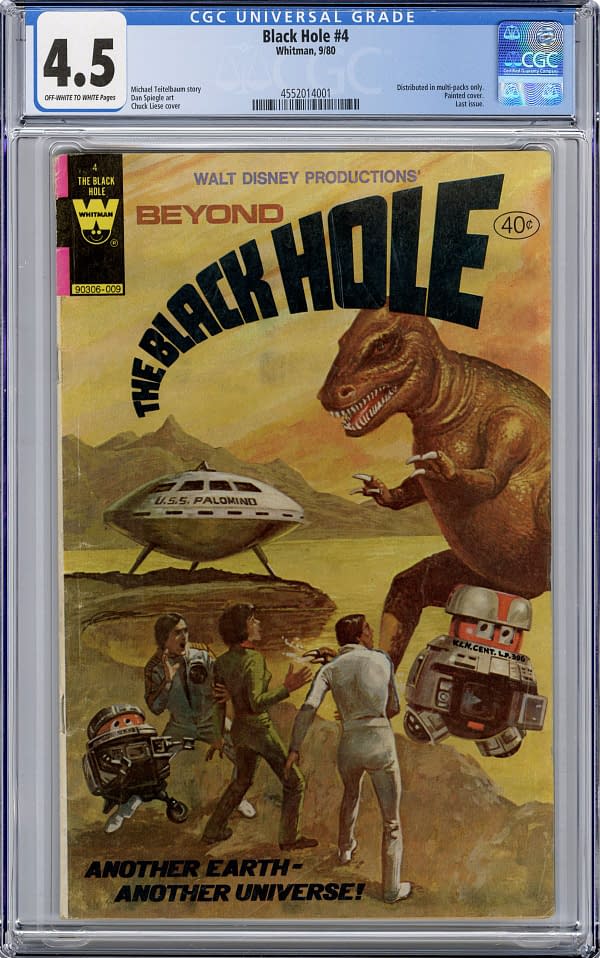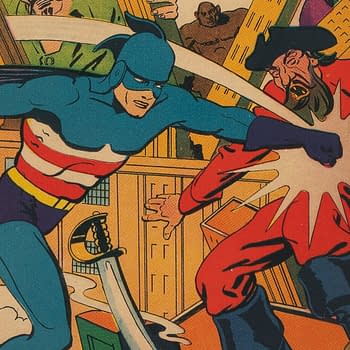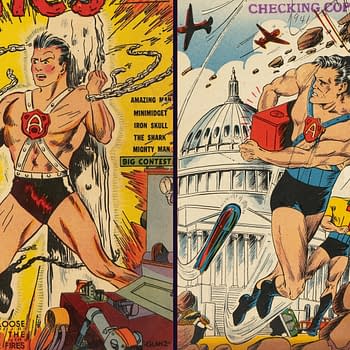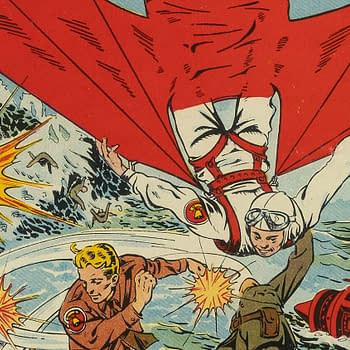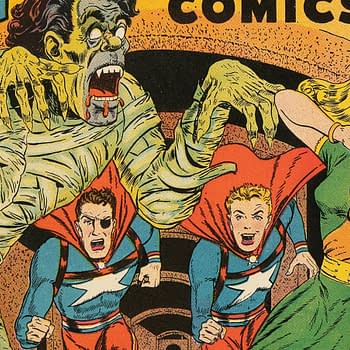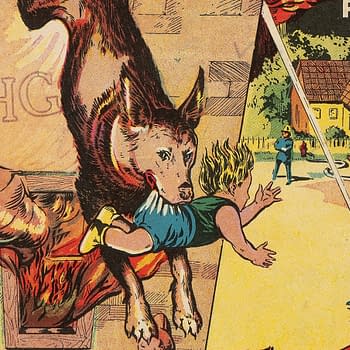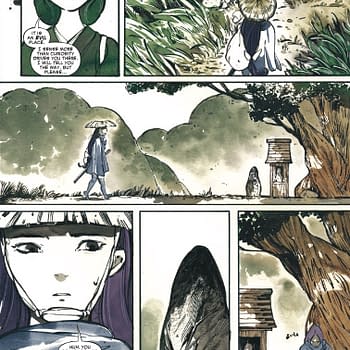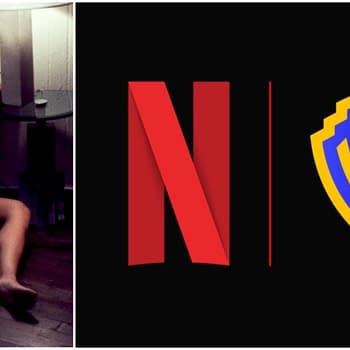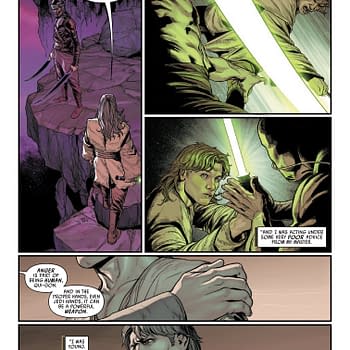Posted in: ComicConnect Sponsored, Comics, Vintage Paper | Tagged:
The Continued Story of Disney's The Black Hole, Up for Auction
Long sought-after for its relative rarity, Whitman's The Black Hole #4 is part of their continuation of the story from the Disney film.
Considered a response to Star Wars (1977), Disney's The Black Hole actually began life as a science fiction disaster movie concept called Space Station One in 1974. Original creators Bob Barbash and Richard Landau had a dizzying range of television (and in Landau's case, film) credits between them. Landau's writing or producing credits included work on a number of science fiction projects, such as The Quatermass Xperiment, The Outer Limits, Voyage to the Bottom of the Sea, and The Six Million Dollar Man by that time. The title itself was likely inspired by Arthur C. Clarke's use of the name "Space Station One" for the now-famous station in 2001: A Space Odyssey. In 1975, Disney went so far as to announce that it would start production on its "biggest science fiction movie ever — and its first space travel film — Space Station One" in June 1976. Perhaps to head off an objection from 2001 distributor MGM, the title was revised to Space Probe One shortly after that 1975 announcement, and the concept went through a few revisions without gaining any traction until Star Wars blew up. According to director Gary Nelson, "They never could get a handle on it. It got kicked around, and they went through a series of writings and rewrites, and they gave up on it. And then when there was such great interest in Star Wars, they brought it back out and looked at it."
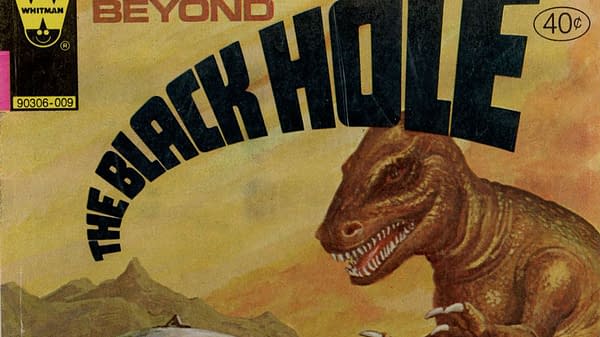
The most expensive Disney film made up to that time, with a production budget of $20 million, The Black Hole opened two weeks after Star Trek: The Motion Picture, to high expectations but mixed reviews. As Nelson would later admit, part of the issue was that "We never had an ending for it. I didn't like the ending. Nobody liked the ending. We just kept shooting hoping that I would come up with an ending…"
Despite this and the mixed reviews that followed, the film did attract a dedicated following who almost immediately hoped for a sequel. While Nelson and most others attached to the project insist that this was never even contemplated, the film was certainly marketed as if it had franchise potential, with merchandise that included action figures, games, a lunch box, records, puzzles, trading cards, and a variety of stamp, sticker and coloring books. Fall 1979 brought a Sunday newspaper strip adaptation of the film by Jack Kirby, written by Carl Fallberg, and inked by Mike Royer. In 1980, The Black Hole star Maximilian Schell was quoted as saying, "Maybe they used this ending because they want to make a sequel — Beyond the Black Hole."
Of course, the comic books would bring us exactly that. In addition to the Kirby Sunday newspaper strip, there was also another movie adaptation comic released by Western Publishing Co. via their various imprints, written by Mary Carey with art by Dan Spiegle. The published versions from these imprints included Walt Disney Showcase #54 (Gold Key, standard comic book format with 52 pages), and a squarebound magazine format with slick paper from the Golden Press imprint, both of which were released shortly before the movie hit theaters in December 1979. Western then launched the Whitman comic book series The Black Hole, whose first two issues reprinted that same movie adaptation material. Then, about two months after Schell speculated that Disney wanted to do a sequel called Beyond the Black Hole, the Whitman comic book series did exactly that: the title was renamed Beyond the Black Hole, and the story continued.
The new material was written by Michael Teitelbaum and drawn by Al McWilliams and Spiegle. The Whitman series overall was intended to last at least six issues, but ended with issue #4 — which is now notoriously difficult to get. In addition to newsstand distribution, the first three issues were available together in a three-pack and are relatively common. Issue #4 received no newsstand distribution and was only available from a different Whitman two-pack. The series ended there in the United States. For the UK market, IPC reprinted the Western Publishing movie adaptation of The Black Hole in magazine format, and then reprinted the Whitman issues #3 and #4 Beyond the Black Hole material as The Black Hole Annual 1981. The planned six issues, including the three-issue story of Beyond the Black Hole, were concluded in the German and Mexican markets, and perhaps others.
While the abrupt end of the series in the U.S. is typically attributed to the mixed reaction to the film, Western Publishing had challenges of its own in the U.S. comics market at this time. The publisher was attempting to launch a number of licensed science fiction comics in the wake of the Star Wars phenomenon, including Flash Gordon, Buck Rogers, Battle of the Planets, and The Black Hole. Western also attempted to bring back Doctor Solar, Man of the Atom, and revived the title UFO Flying Saucers as UFO and Outer Space during this period.
Another of Western's Disney licensed comics of the period, Condorman, followed the same pattern as The Black Hole, with the first two issues adapting the film, followed by one issue of continuing adventures. The publisher had a noteworthy tradition of producing new comic book storylines based on established live-action tv/film IP even before this era, in titles such as Adam 12, Boris Karloff's Thriller, Dark Shadows, The Man from U.N.C.L.E, Lost in Space, and Star Trek, among others. In fact, Western's loss of the Star Trek license to Marvel at the time of the release of Star Trek: The Motion Picture, combined with Marvel's success with Star Wars as an ongoing series, may be part of why they went after the license for The Black Hole with plans to continue the story.
With perhaps one exception, none of the titles from Western's post-Star Wars science fiction adventure blitz survived for very long. Flash Gordon was the longest-lasting of these, but ended along with the entirety of Western's adventure comic book line in the first quarter of 1982, including the long-running classic Turok, Son of Stone, among other titles. In the decades since, The Black Hole #4 has become something of a legend for its difficulty to get and the underappreciated fact that it continues the story from the movie, and there's a CGC 4.5 copy up for auction today at Comic Connect.
